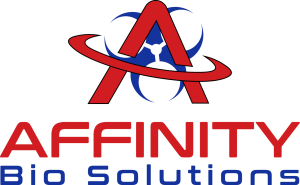Probably the acronym “HazMat” sounds a little bit strange if this is the first time you came across the acronym. What about when we say hazardous materials, makes sense a little sense right? An emergency such as suicide, violent crime, or traumatic accident, which could lead to the spill of numerous chemicals that requires major clean-up, to avoid any possible harm to the environment, human beings, or animals in general. Occupational Safety And Health Administration (OSHA) and other health regulatory organizations had itemized quite a good number of chemical materials that require professional hazMat clean-up, chemical materials include:
- Lead

- Asbestos
- Animal waste
- Blood
- Radioactive waste
- Nuclear waste
- Toxic agents
- Combustible
- Corrosive
- Explosive and many other chemical materials
Getting rid of these chemicals proves to be quite dangerous and harmful to both experts and the general populace. The US government and prospective state governments had strictly set out guidelines and rules that must be followed, only by the approved companies with the required professional skills.
What Hazardous Materials (HazMat) Workers Do?
A particular task or the duty of a hazMat worker strictly depends on what is to be cleaned and the particular area of the USA you are cleaning. Different tasks are required when cleaning up explosive or irritants. Radioactive and nuclear wastes require a more sophisticated approach, Lead, and asbestos, or arsenic always has a different task from others. Quite often areas that are prone to disaster would not have the same task with a controlled environment. Workers always treat known materials differently from unidentified materials. In general-purpose they do share some similar tasks, include :
- Examining the hazardous materials (hazMat) to specify the best means to clean them up.
- Strictly observing safety procedures and following state and federal laws.
- Enabling framing and mainland areas to fast track safe disposal.
- Sanitize, clean, and deodorize the site of the incident.
- Sterilizing contaminated materials for possible reuse.
- Making sure the hazardous materials and other related wastes are well packaged, transported, and stored in a safe environment.
- Saving lists of clean-up activities
Cleaning hazardous materials need collaboration, strategic planning, strict safety rules, and some sophisticated equipment that could only be handled by professionals. In most cases, workers are seen wearing goggles, coverall, gloves, and shoe covers. For the most dangerous spills like nuclear or radioactive wastes workers do wear solely enclosed protective gears.
Types Of HazMat Clean-up Experts.
There are different types of hazMat clean-up, which requires different specialties. And different worker specializes in a particular area such as
- Mold remediation experts
- Radioactive material experts
- Environmental remediation/ Emergency and disaster response employees
- Treatment, storage, and disposal repairpersons
- Lead abatement experts
- Asbestos abatement experts
Conclusion
HazMat cleaners are required to completely clean, sterilize, deodorize, and sanitize the areas in which there are spills of dangerous chemical materials. The clean-up can be challenging and dangerous to the general public, for your safety it is always advisable to keep a good distance off the site, for experts to clean, store, or dispose of properly.

